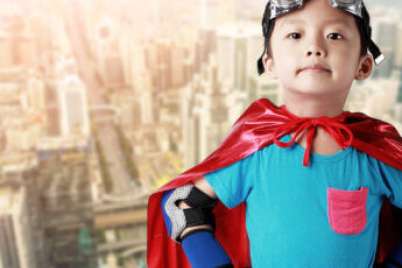
Use our activities to help your child develop physical literacy
Does your child have physical literacy? Should you care? If you want your child to have the best opportunities in life, then yes.
What is physical literacy? Simply put it’s a collection of basic movement and sport skills such as running, jumping, skipping, catching, throwing and kicking. The earlier children correctly learn these skills, the more “fluent” and confident they will be in physical activity. That confidence affects every part of their lives, from academic to social. With physical literacy, they’ll have more fun in a diversity of sports and they’ll be more likely to be active for the rest of their lives.
Physical literacy doesn’t just happen on its own. It’s a “vocabulary” of movement that has to be learned.
To learn this “physical” vocabulary, children need to start in early childhood, before they even start learning their ABCs and 123s. And as basic math leads eventually to algebra, and command of the alphabet leads eventually to writing essays and stories, basic movement skills eventually grow into more refined sport and physical activity skills.
Tools you can use
Active for Life has created a searchable database of activities to develop physical literacy. You can filter the list by age to see which movement skills and sport skills you can help your child develop now. Wondering how physically literate your child is? Find out with our physical literacy checklists.
The language of movement
Physical literacy is like learning a second language. The older you are when you learn, the more difficult it is and the less confident you are using your second language. Anyone who has learned French or another language from a book can relate to this. Just think how uncomfortable you are speaking that second language in public. The key is to make sure kids develop physical literacy when they are young, otherwise they may feel awkward for the rest of their lives and close the door on any sort of physical activity.
Why is this important? Because physical literacy gives your child the best chance for lifelong health and success in every part of life.
Without physical literacy, children are much more likely to be physically inactive. This can lead to lower school grades, reduced confidence, lower self-esteem, poor social skills, and significant health problems.
“Yeah, yeah, I know”
We’ve all heard these things before, so it’s easy to gloss over it and say, “Yeah, yeah, I know.” But we need to act on it as parents. To realize their full potential, our children need to be physically literate.
And physical literacy isn’t something just for jocks. These are skills that are essential for all kids. If you want your child to be active, healthy, and successful, physical literacy will provide the foundation for all of it.
“But I’m not a sporty parent”
If you’re not a “sporty” parent, don’t worry. You don’t have to be a great athlete to make sure your child is learning the basic skills. Start by playing these simple games to build fundamental movement skills. Move with your child in whatever ways you enjoy most: dance, play catch, hike a local trail, kick a ball around your backyard, do yoga together, or play silly games like sock ball soccer. You can find even more ideas for easy ways you can be active every day in our printable Recipe For An Active Day!





